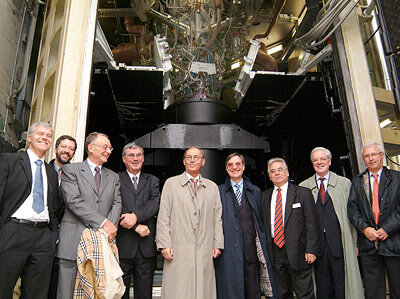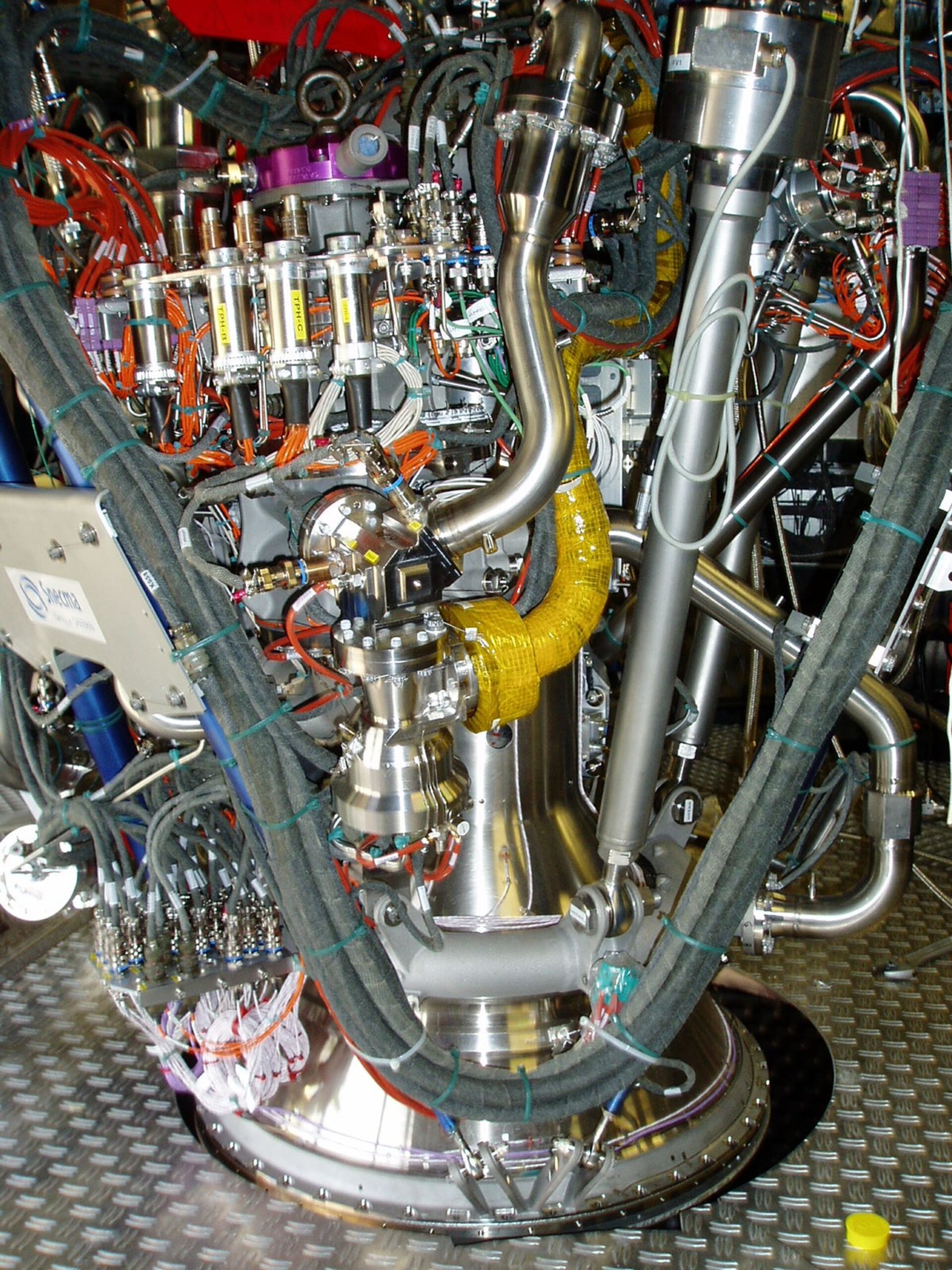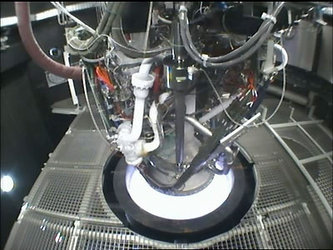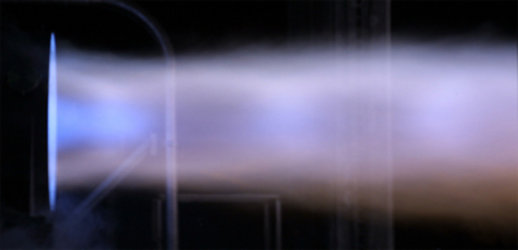Second Vinci engine ready for testing
The successful qualification of the rocket-engine test facility P4.1 in Lampoldshausen, Germany was marked by the visit on 2 November of high-level management from ESA, the French space agency CNES, rocket-engine manufacturer Snecma/SAFRAN Group and hosted by the German Aerospace Center DLR.
The facility is now ready to test the second upper-stage Vinci engine M-2, intended for future launcher developments in Europe.
This unique new test facility, which was supported by ESA funding, allows upper-stage launcher engines of up to 20 tonnes of thrust to perform a full-thrust hot-firing lasting more than 10 minutes in near-vacuum conditions simulating the space environment.
Setting up this facility and qualifying its performance envelope within such a short time is the: "result of the dedication of European engineers at ESA, CNES, DLR and the industrial team, led by launcher engine prime contractor Snecma/SAFRAN Group," said Antonio Fabrizi, ESA Director for Launchers, in his address to the invited guests.

Qualification of the performance envelope and verification of the adequate functioning of all the elements of the P4.1 test facility have been achieved while testing the new re-ignitable Vinci M-1 upper-stage engine. Altogether nine test runs have been carried out in just five months.
When the engine fired for the first time for a short one-second ignition on 20 May 2005, it was the beginning of a very successful test series for the Vinci engine and for the qualification of the engine test facility at DLR. Step by step the performance was increased culminating on 27 July in a long duration firing of 60 seconds at fully established conditions.
"It was remarkable that this brand new engine and the new test facility performed in a stable way throughout all the tests and that the objectives have been reached after only a few tests," said Professor Siegmar Wittig, President of DLR and Chairman of the ESA Council.
The decision to construct the new engine test facility at the DLR test centre was made to ensure adequate test facilities for the development of the next generation upper-stage engine and because of limitations in other European test facilities. DLR's P4.1 facility is unique across the continent for its size and performance, and represents a very valuable tool for the verification of the new engine technologies under development.
The new Vinci upper-stage launcher engine is a re-ignitable cryogenic design using a more efficient expander cycle that does not require a gas generator to drive its two turbo-pumps: one for liquid hydrogen (LH2) and one for liquid oxygen (LOX). Vinci will provide 18 tonnes of thrust in vacuum with a specific impulse of 465 seconds.
The second Vinci development engine is already installed in the P4.1 ready for testing. Experiences from the tests of the first Vinci motor M-1 have been incorporated into this second engine and a further extension of the performance envelope is foreseen. As a highlight of this test series, the newly conceived carbon nozzle extension will be installed once the engine has successfully performed its initial test runs.
The test facility P4.1 at Lampoldshausen and the new re-ignitable Vinci upper-stage engine have been funded by ESA under the Ariane-5 Plus programme. Related development contracts have been managed by CNES on behalf of ESA.
Technologies involved in developing this new upper-stage engine are of great importance for future developments in the European propulsion sector. Both the test facility and the new expander cycle engine are unique in Europe and will be the basis for future launcher developments in the continent.






